New Zealand, located in the southwestern Pacific Ocean, is a land of stunning natural beauty and unique wildlife. The country is divided into two main islands, the North Island and the South Island, and numerous smaller islands.
The environment in New Zealand is diverse, ranging from snow-capped mountains to sandy beaches, and from lush rainforests to barren deserts. The weather is also varied, with warm summers and cool winters, and frequent rainfall throughout the year.
The country is home to a wide range of animals, including many species found nowhere else in the world, such as the kiwi bird, the tuatara lizard, and the kakapo parrot. Despite the presence of invasive species such as rats and possums, New Zealand remains a haven for unique and fascinating wildlife.
.
Types Of Ants In New Zealand
The Types Of Ants In New Zealand are listed here: Amblyopone, Austroponera, Brachyponera, Sneaking Ants, Discothyrea, Doleromyrma, Heteroponera, Huberia, Crypt Ants, Iridomyrmex, Linepithema, Mayriella, Trailing Pharaoh And Timid Ants, Myrmecia, Crazy Ants, Ochetellus, Orectognathus, Crazy Ants, Big Headed Ants, Porthole Ants, Prolasius, Rhytidoponera, Fire Ants, Vampire Ants, Miniature Trap-Jaw Ants, Syllophopsis, Pale-Footed Ants, Pavement Ants, Sneaking Ants, Argentine Ants, Pharaoh Ants, Ochetellus Glaber, Longhorn Crazy Ants, Big Headed Ants.
If you’ve found some other ants in this region, contact us, and we will add them to the list!
1) Amblyopone
Amblyoponebe is a species of ant that belongs to the Amblyoponinae subfamily.
These ants are known for their unique physical characteristics, including their elongated mandibles and flattened heads.
They are typically small in size, measuring only a few millimeters in length.
Amblyoponebe ants are primarily found in forested areas, where they live in underground nests.
They are known to be solitary hunters, preying on other insects and arthropods.
Their elongated mandibles are used to capture and subdue their prey, which they then carry back to their nests to feed on.
Despite their small size, Amblyoponebe ants are known for their aggressive behavior.
They are not afraid to defend their nests and will attack any intruders that come too close.
This makes them a formidable opponent for other insects and animals that may try to invade their territory.
Overall, Amblyoponebe ants are a fascinating species that play an important role in their ecosystem.
Their unique physical characteristics and aggressive behavior make them a fascinating subject for researchers and nature enthusiasts alike.
2) Austroponera
Austroponerabe is a species of ant that belongs to the family Formicidae.
These ants are known for their small size and unique physical characteristics.
They have a dark brown or black coloration and are typically less than 2 millimeters in length.
One of the most distinctive features of Austroponerabe ants is their mandibles.
These ants have long, curved mandibles that are used for capturing prey and defending their colony.
They are also known for their aggressive behavior and will attack other ants or insects that come too close to their nest.
Austroponerabe ants are typically found in forested areas and are known to nest in soil or leaf litter.
They are also known to form small colonies, with only a few hundred individuals in each group.
Despite their small size, these ants play an important role in their ecosystem by helping to control the population of other insects and by aerating the soil.
In addition to their ecological importance, Austroponerabe ants have also been the subject of scientific research.
Scientists have studied their behavior and physiology in order to better understand the evolution and ecology of ants.
This research has led to a greater understanding of the complex social structures and behaviors of these fascinating insects.
Overall, Austroponerabe ants are a unique and important species that play a vital role in their ecosystem.
Their small size and aggressive behavior make them a formidable predator, while their ecological importance and scientific significance make them a valuable subject of study for researchers around the world.
3) Brachyponera

Brachyponera is a genus of ants belonging to the subfamily Ponerinae.
One of the species in this genus is Brachyponera sennaarensis, commonly known as the Sennaar ant.
These ants are relatively large, measuring up to 12mm in length, and are known for their aggressive behavior.
The workers of Brachyponera sennaarensis are dark brown in color and have a shiny exoskeleton.
They have a powerful sting and are known to attack other insects and even small vertebrates.
These ants are also known to forage for food in large groups, and can quickly overwhelm their prey.
Brachyponera sennaarensis is found in a variety of habitats, including forests, grasslands, and deserts.
They are known to build their nests in soil, under rocks, and in tree trunks.
These ants are also known to be nocturnal, and are most active during the night.
Despite their aggressive behavior, Brachyponera sennaarensis is an important part of the ecosystem.
They help to control the population of other insects and play a vital role in the food chain.
However, their powerful sting and aggressive behavior make them a potential danger to humans and other animals.
4) Sneaking Ants, Cardiocondyla
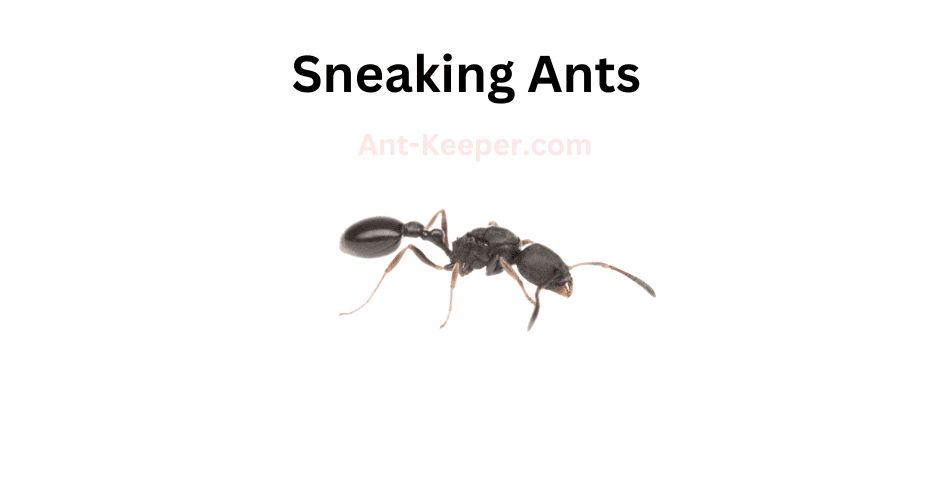
Sneaking Ants, also known as Camponotus obscuripes, are a species of ant that are commonly found in forested areas.
These ants are known for their ability to move quietly and quickly, making them difficult to detect.
Sneaking Ants are typically black or dark brown in color and range in size from 5 to 12 millimeters in length.
They have a distinctive, flattened head and a narrow waist, which helps them to navigate through tight spaces.
One of the most interesting aspects of Sneaking Ants is their behavior.
These ants are known for their ability to sneak up on other insects and steal their food.
They are also known to raid the nests of other ant species, taking their eggs and larvae back to their own colony to raise as their own.
Sneaking Ants are omnivorous, meaning they eat both plant and animal matter.
They have been observed feeding on nectar, honeydew, and small insects.
They are also known to scavenge for food, often taking advantage of the leftovers from other insects.
In terms of reproduction, Sneaking Ants have a unique system.
The colony is typically led by a single queen, who is responsible for laying eggs.
However, there are also a number of worker ants who are capable of laying eggs as well.
These eggs are typically unfertilized and produce male ants, which are used for mating purposes.
Overall, Sneaking Ants are a fascinating species with unique behaviors and adaptations.
Their ability to move quietly and quickly makes them a formidable predator, and their omnivorous diet allows them to thrive in a variety of environments.
5) Discothyrea
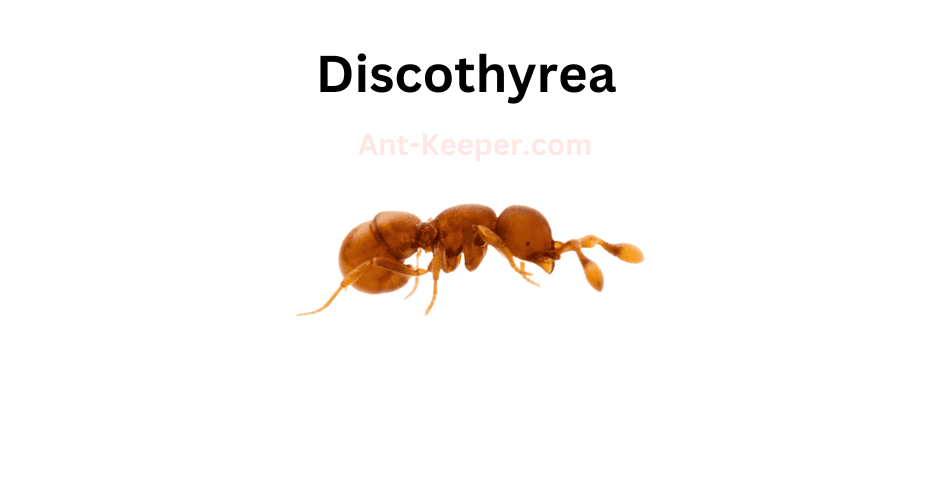
Discothyreabe is a species of ant that belongs to the Formicidae family.
These ants are known for their unique physical characteristics, including their elongated mandibles and slender bodies.
The workers of this species are typically around 3-4mm in length, while the queen can grow up to 7mm.
Discothyreabe ants are primarily found in forested areas, where they build their nests in soil or leaf litter.
They are known to be aggressive towards other ant species and will defend their territory fiercely.
These ants are also known to be nocturnal, which means they are most active during the night.
One of the most interesting aspects of Discothyreabe ants is their feeding habits.
They are known to be generalist feeders, which means they will eat a wide variety of foods.
They have been observed feeding on insects, nectar, and even carrion.
This adaptability allows them to thrive in a variety of environments.
Despite their small size, Discothyreabe ants play an important role in their ecosystem.
They help to control insect populations and contribute to soil health through their nest-building activities.
They are also an important food source for many other animals, including birds and small mammals.
Overall, Discothyreabe ants are a fascinating species that have adapted to thrive in a variety of environments.
Their unique physical characteristics and feeding habits make them an important part of their ecosystem.
6) Doleromyrma
Doleromyrmabe is a species of ant that belongs to the family Formicidae.
These ants are known for their unique physical characteristics and behavior.
They have a dark brown or black coloration and are relatively small in size, measuring around 2-3 mm in length.
One of the most distinctive features of Doleromyrmabe ants is their mandibles, which are elongated and curved.
These mandibles are used for a variety of purposes, including hunting, defense, and nest building.
The ants are also known for their aggressive behavior, and will not hesitate to attack intruders or other ants that they perceive as a threat.
Doleromyrmabe ants are typically found in forested areas, where they build their nests in soil or leaf litter.
They are omnivorous, feeding on a variety of insects, fruits, and seeds.
The ants are also known to engage in mutualistic relationships with other insects, such as aphids, which they protect in exchange for a sugary substance called honeydew.
Despite their small size, Doleromyrmabe ants play an important role in their ecosystem.
They help to control insect populations, disperse seeds, and aerate soil.
However, like many other ant species, they are also vulnerable to habitat loss and other environmental threats.
Overall, Doleromyrmabe ants are fascinating creatures that have adapted to survive in a variety of environments.
Their unique physical characteristics and behavior make them a valuable subject of study for scientists and nature enthusiasts alike.
7) Heteroponera
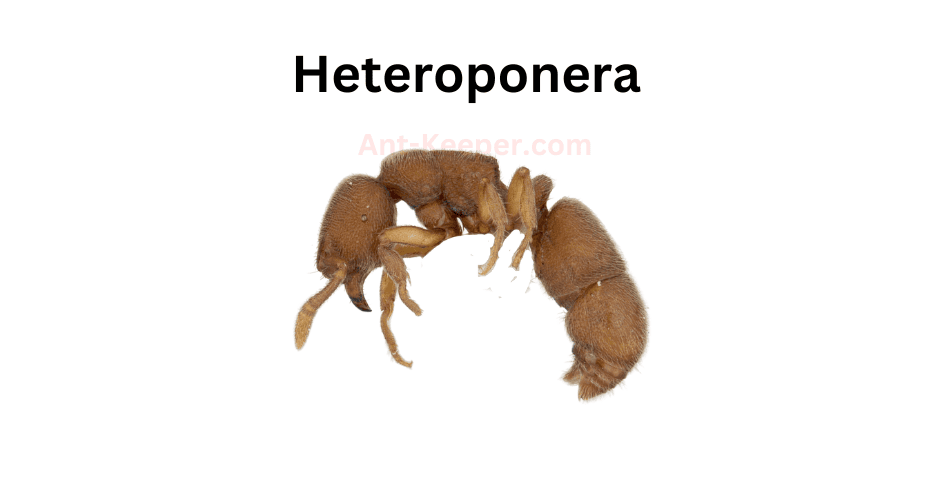
Heteroponerabe is a species of ant that belongs to the Heteroponera genus.
These ants are known for their aggressive behavior and are often found in forested areas.
They have a dark brown or black coloration and are relatively small in size, measuring around 5-7mm in length.
Heteroponerabe ants are solitary hunters and are known to be very efficient at capturing prey.
They have strong mandibles that they use to subdue their prey, which can include other insects, spiders, and even small vertebrates.
These ants are also known to scavenge for food, and will often feed on the carcasses of dead animals.
One interesting aspect of Heteroponerabe ants is their reproductive behavior.
Unlike many other ant species, Heteroponerabe queens do not mate with multiple males.
Instead, they mate with a single male and then store his sperm in a specialized organ called the spermatheca.
This allows the queen to fertilize her eggs over a long period of time, without the need for repeated mating.
Overall, Heteroponerabe ants are fascinating creatures that play an important role in their ecosystem.
While they may be aggressive and intimidating, they are also highly efficient hunters and scavengers that help to keep their environment in balance.
8) Huberia
Huberiabe is a species of ant that belongs to the Formicidae family.
These ants are known for their unique physical characteristics and behavior.
They have a dark brown or black coloration and are relatively small in size, measuring around 2-3 millimeters in length.
One of the most distinctive features of Huberiabe ants is their mandibles, which are long and curved.
These mandibles are used for a variety of purposes, including hunting and defense.
Huberiabe ants are also known for their aggressive behavior, and they will not hesitate to attack other insects or even humans if they feel threatened.
In terms of their habitat, Huberiabe ants are typically found in forested areas, where they build their nests in the soil or in decaying wood.
They are also known to live in close proximity to other ant species, and will often engage in territorial disputes with their neighbors.
Despite their small size, Huberiabe ants play an important role in their ecosystem.
They are known to be efficient predators, and will hunt a variety of insects and other small animals.
They also help to aerate the soil and distribute nutrients, which can benefit the growth of plants in their environment.
Overall, Huberiabe ants are a fascinating species that have adapted to thrive in a variety of environments.
Their unique physical characteristics and behavior make them a valuable subject of study for scientists and nature enthusiasts alike.
9) Crypt Ants, Hypoponera
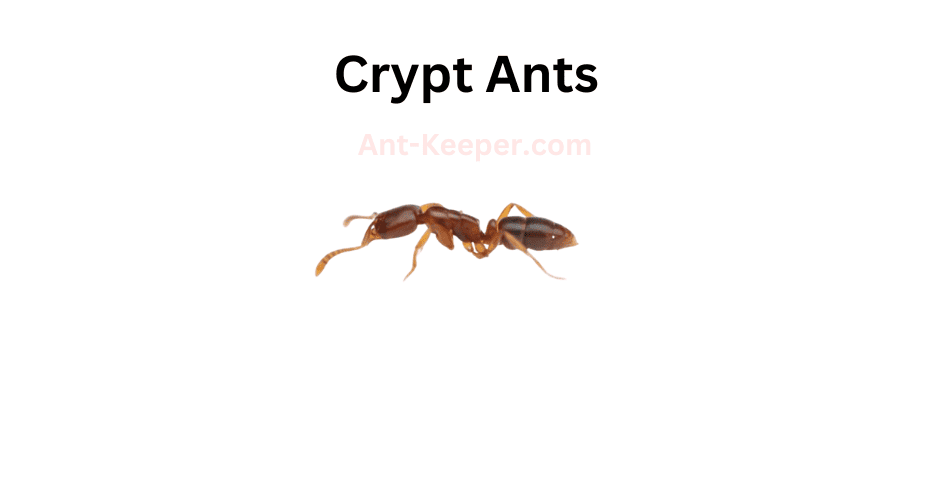
Crypt ants, also known as fungus-growing ants, are a group of ants that cultivate fungi for food.
They are found in various habitats, including forests, grasslands, and deserts.
Crypt ants are known for their unique nesting behavior, as they construct underground chambers to house their fungal gardens.
These ants have a symbiotic relationship with the fungi they cultivate.
The ants provide the fungi with a suitable environment for growth, while the fungi provide the ants with a source of food.
The ants also protect their fungal gardens from other insects and parasites.
Crypt ants are social insects, living in colonies that can range from a few dozen to several thousand individuals.
The colonies are organized into castes, with the queen being the largest and most important member.
The queen is responsible for laying eggs, while the workers are responsible for tending to the fungal gardens and caring for the young.
One interesting aspect of crypt ants is their ability to create "satellite" nests.
These nests are smaller chambers located near the main nest, and they serve as storage areas for food and as a place for the queen to lay eggs.
The satellite nests are connected to the main nest by underground tunnels, allowing the ants to move between them.
Overall, crypt ants are fascinating insects that have developed a unique way of obtaining food.
Their symbiotic relationship with fungi and their complex nesting behavior make them an important species to study in the field of entomology.
10) Iridomyrmex
Iridomyrmex is a genus of ants that belongs to the family Formicidae.
These ants are commonly known as sugar ants or meat ants.
The species Iridomyrmex is a small, black ant that measures about 3-4 mm in length.
They have a slender body with a narrow waist and long legs.
The head of the ant is slightly elongated and has a pair of large compound eyes.
The antennae are also long and slender.
Iridomyrmex ants are known for their aggressive behavior and are often seen in large numbers.
They are omnivorous and feed on a variety of food sources, including nectar, honeydew, insects, and other small animals.
They are also known to scavenge on dead animals and carrion.
These ants are social insects and live in colonies that can range in size from a few hundred to several thousand individuals.
The colony is usually headed by a queen ant, who is responsible for laying eggs and reproducing.
The workers are responsible for foraging, caring for the young, and defending the colony.
Iridomyrmex ants are found in a variety of habitats, including forests, grasslands, and urban areas.
They are known to be particularly abundant in areas with high levels of human activity, such as parks and gardens.
Overall, Iridomyrmex ants are fascinating creatures that play an important role in their ecosystems.
While they may be a nuisance to humans at times, they are an essential part of the food chain and help to keep other insect populations in check.
11) Linepithema

Linepithema is a genus of ants that belongs to the subfamily Dolichoderinae.
The ants in this genus are small in size, measuring between 1.5 to 3 millimeters in length.
They are known for their ability to form large colonies, which can consist of thousands of individuals.
Linepithema ants are typically found in urban and suburban areas, where they feed on a variety of food sources, including sweets, meats, and fats.
They are also known to feed on the honeydew produced by aphids and other insects.
One of the most interesting aspects of Linepithema ants is their ability to form supercolonies.
These supercolonies can span hundreds of meters and contain millions of individuals.
This is made possible by the ants' ability to recognize and tolerate individuals from other colonies, which allows them to merge and form larger groups.
Despite their small size, Linepithema ants are known for their aggressive behavior.
They will defend their territory and food sources fiercely, often attacking other ants and insects that come too close.
They are also known to be able to adapt quickly to changing environments, which has allowed them to thrive in many different parts of the world.
Overall, Linepithema ants are fascinating creatures that have adapted to life in urban and suburban environments.
Their ability to form supercolonies and adapt quickly to changing conditions has made them a successful and resilient species.
12) Mayriella
Mayriellabe is a species of ant that belongs to the Formicidae family.
These ants are known for their unique physical characteristics and behavior.
They have a dark brown or black coloration and are relatively small in size, measuring around 2-3 millimeters in length.
One of the most distinctive features of Mayriellabe ants is their elongated mandibles, which are used for a variety of tasks such as digging, carrying food, and defending their colony.
They are also known for their aggressive behavior towards other ant species and will often engage in territorial disputes.
Mayriellabe ants are typically found in forested areas and are known to build their nests in soil or leaf litter.
They are omnivorous and will feed on a variety of food sources including insects, nectar, and plant sap.
Despite their small size, Mayriellabe ants play an important role in their ecosystem.
They help to aerate the soil, control insect populations, and provide food for other animals such as birds and reptiles.
Overall, Mayriellabe ants are a fascinating species that continue to intrigue scientists and nature enthusiasts alike.
13) Trailing Pharaoh And Timid Ants, Monomorium

The Trailing Pharaoh ant, also known as the Monomorium pharaonis, is a small, reddish-brown ant species that is commonly found in urban areas.
These ants are known for their ability to form large colonies, which can consist of thousands of individuals.
One interesting behavior of the Trailing Pharaoh ant is their tendency to trail behind other ants.
This behavior is thought to be a form of communication, as the trailing ants are able to follow the scent trail left by the leading ants.
This behavior is also used to locate food sources, as the trailing ants are able to follow the trail to the source of the food.
In contrast to the bold behavior of the Trailing Pharaoh ant, the Timid ant, also known as the Temnothorax species, is a much more cautious species.
These ants are small and brown, and are often found in wooded areas.
They are known for their timid behavior, and will often retreat into their nests when threatened.
Despite their timid nature, the Timid ant is still able to form large colonies.
They are also known for their ability to adapt to changing environments, and can be found in a variety of habitats, including forests, meadows, and even urban areas.
Overall, both the Trailing Pharaoh ant and the Timid ant are fascinating species that demonstrate unique behaviors and adaptations.
By studying these ants, scientists can gain a better understanding of the complex social behaviors and ecological roles of ants in their respective environments.
14) Myrmecia
Myrmecia is a genus of ants that belongs to the family Formicidae.
These ants are commonly known as bull ants or jack-jumpers due to their aggressive nature and ability to jump.
Myrmecia ants are found in various habitats, including forests, woodlands, and grasslands.
The Myrmecia ant is a large and robust insect, with workers ranging from 8 to 40 millimeters in length.
They have a distinctive appearance, with long mandibles and a powerful sting.
The coloration of Myrmecia ants varies depending on the species, but they are typically black, red, or brown.
Myrmecia ants are known for their aggressive behavior and are considered one of the most dangerous ant species in the world.
They are highly territorial and will attack anything that enters their territory, including humans.
Their powerful mandibles and venomous sting make them a formidable opponent.
Despite their aggressive nature, Myrmecia ants play an important role in their ecosystem.
They are predators, feeding on other insects and small animals.
They also help to aerate the soil and distribute seeds, contributing to the growth and health of their environment.
In conclusion, the Myrmecia ant is a fascinating and formidable insect.
Their aggressive behavior and powerful sting make them a force to be reckoned with, but they also play an important role in their ecosystem.
15) Crazy Ants, Nylanderia
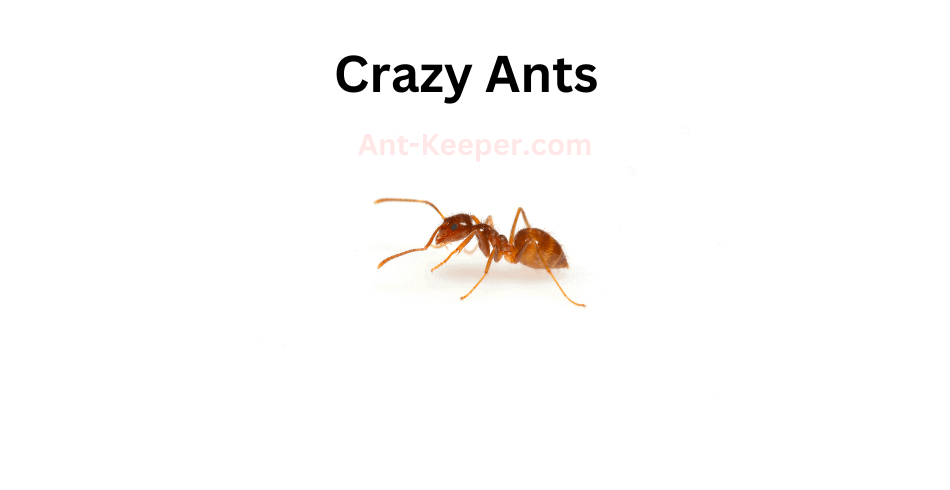
Crazy ants, also known as Nylanderia fulva, are a species of ant that belong to the family Formicidae.
They are small in size, measuring only about 2.2 to 3 mm in length, and are reddish-brown in color.
These ants are known for their erratic and unpredictable behavior, hence the name "crazy ants."
Crazy ants are native to South America, but have since spread to other parts of the world, including North America, Asia, and Australia.
They are highly adaptable and can thrive in a variety of environments, including urban areas, forests, and grasslands.
One of the most notable characteristics of crazy ants is their ability to form large colonies with multiple queens.
This allows them to quickly establish themselves in new areas and outcompete other ant species.
Crazy ants are also known for their aggressive behavior towards other insects and animals, including humans.
In addition to their aggressive behavior, crazy ants are also known for their ability to cause damage to electrical equipment.
They are attracted to electrical currents and can easily short-circuit electronics, causing damage and potentially starting fires.
Despite their small size, crazy ants are a formidable species that can have a significant impact on their environment.
As they continue to spread to new areas, it is important to monitor their behavior and take steps to control their populations in order to minimize their impact on ecosystems and human infrastructure.
16) Ochetellus

Ochetellus is a genus of ants that belongs to the subfamily Dolichoderinae.
These ants are small in size, measuring between 2-5 mm in length.
They are known for their distinctive appearance, with a slender and elongated body that is covered in fine hairs.
The head of Ochetellus ants is also elongated, with large mandibles that are used for hunting and defense.
Ochetellus ants are social insects that live in colonies.
The colonies are typically small, with only a few hundred individuals.
The queen is the largest member of the colony and is responsible for laying eggs.
The workers, which are all female, are responsible for foraging, caring for the young, and defending the colony.
Ochetellus ants are omnivorous, meaning they eat both plant and animal matter.
They are known to feed on insects, nectar, and honeydew.
They are also known to tend to aphids, which produce honeydew that the ants feed on.
Ochetellus ants are found in a variety of habitats, including forests, grasslands, and deserts.
They are known to be particularly abundant in areas with sandy soils.
These ants are important members of their ecosystems, playing a role in seed dispersal and soil health.
Overall, Ochetellus ants are fascinating insects that are well adapted to their environments.
Their unique appearance and behavior make them a popular subject of study for entomologists and nature enthusiasts alike.
17) Orectognathus
Orectognathus is a genus of ants belonging to the family Formicidae.
The ants in this genus are known for their elongated mandibles, which are used for capturing prey and defending their colonies.
Orectognathus ants are typically found in forested areas and are known to be active foragers, often hunting for insects and other small invertebrates.
The workers of Orectognathus ants are typically small in size, measuring between 2-5mm in length.
They are typically reddish-brown in color and have a distinctively elongated head and mandibles.
The queen ants are larger in size, measuring up to 10mm in length, and are responsible for laying eggs and maintaining the colony.
Orectognathus ants are known to be highly territorial and will aggressively defend their colonies against intruders.
They are also known to be highly adaptable and can thrive in a variety of different environments, including both tropical and temperate regions.
Despite their small size, Orectognathus ants play an important role in their ecosystems.
They are known to be important predators of other insects and can help to control populations of pests in their habitats.
Additionally, they are an important food source for many other animals, including birds and small mammals.
Overall, Orectognathus ants are fascinating creatures that play an important role in their ecosystems.
Their unique physical characteristics and behaviors make them a fascinating subject of study for scientists and nature enthusiasts alike.
18) Crazy Ants, Paratrechina

Crazy ants, also known as Nylanderia fulva, are a species of ant that belong to the family Formicidae.
They are small in size, measuring only about 2.2 to 3 mm in length, and are reddish-brown in color.
These ants are known for their erratic and unpredictable behavior, hence the name "crazy ants."
Crazy ants are native to South America, but have since spread to other parts of the world, including North America, Asia, and Australia.
They are highly adaptable and can thrive in a variety of environments, including urban areas, forests, and grasslands.
One of the most notable characteristics of crazy ants is their ability to form large colonies with multiple queens.
This allows them to quickly establish themselves in new areas and outcompete other ant species.
Crazy ants are also known for their aggressive behavior towards other insects and animals, including humans.
In addition to their aggressive behavior, crazy ants are also known for their ability to cause damage to electrical equipment.
They are attracted to electrical currents and can easily short-circuit electronics, causing damage and potentially starting fires.
Despite their small size, crazy ants are a formidable species that can have a significant impact on their environment.
As they continue to spread to new areas, it is important to monitor their behavior and take steps to control their populations in order to minimize their impact on ecosystems and human infrastructure.
19) Big Headed Ants, Pheidole
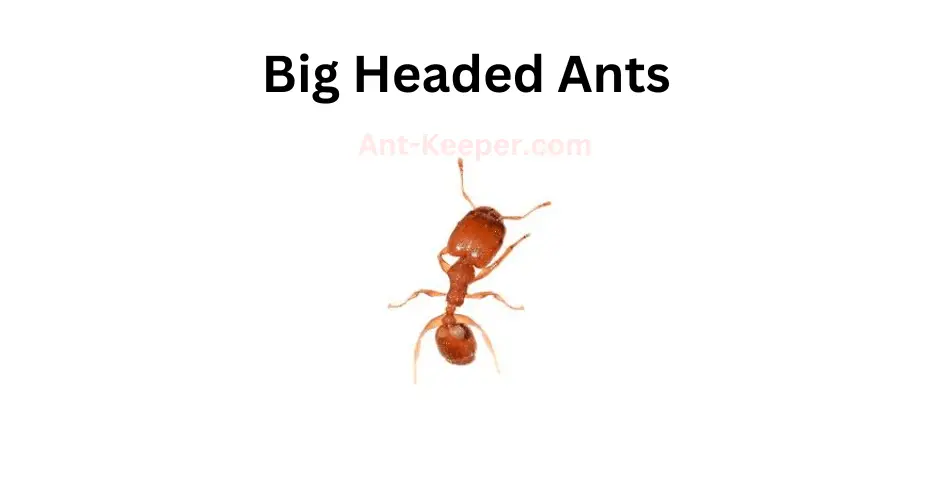
Big Headed Ants, also known as Pheidole megacephala, are a species of ant that belong to the family Formicidae.
These ants are known for their distinctive large heads, which are used for defense and communication within their colonies.
Big Headed Ants are typically found in tropical and subtropical regions, where they build their nests in soil, leaf litter, and other organic matter.
They are omnivorous, feeding on a variety of insects, seeds, and other small organisms.
One of the most interesting aspects of Big Headed Ants is their social behavior.
They live in large colonies, with a queen ant at the center of the hierarchy.
The queen is responsible for laying eggs, while the other ants in the colony perform various tasks such as foraging for food, caring for the young, and defending the colony from predators.
Big Headed Ants are also known for their ability to displace other ant species in their habitats.
They are aggressive and have been known to attack and kill other ants, as well as compete with them for resources.
Despite their aggressive behavior, Big Headed Ants are not considered a major pest species.
However, their ability to displace other ant species and their potential impact on native ecosystems make them an important species to study and monitor.
20) Porthole Ants, Ponera
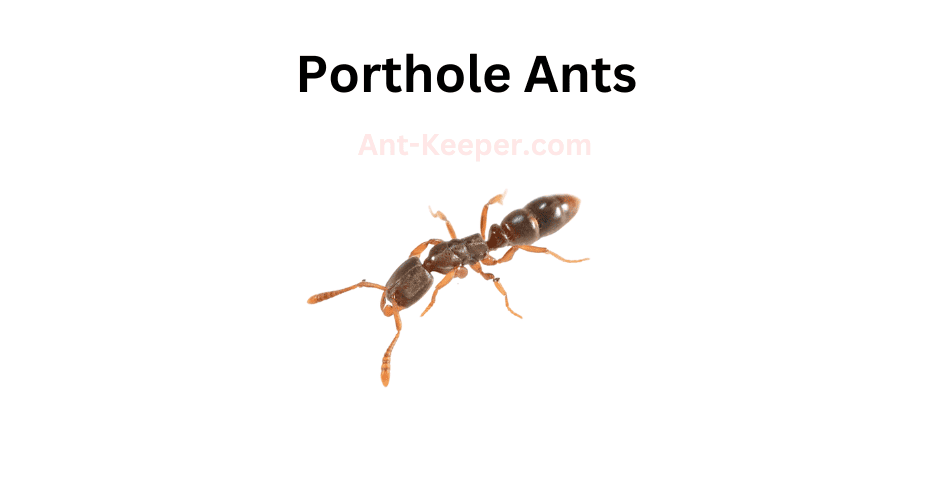
Porthole ants, also known as Temnothorax spp., are a genus of small ants that are commonly found in forested areas.
These ants are known for their unique nesting behavior, as they create their nests in small cavities or "portholes" in trees, rocks, or other natural structures.
Porthole ants are typically less than 5mm in length and have a dark brown or black coloration.
They are social insects and live in colonies that can range from a few dozen to several hundred individuals.
The colonies are typically led by a single queen, who is responsible for laying eggs and maintaining the colony's reproductive population.
One of the most interesting aspects of porthole ants is their nesting behavior.
Unlike many other ant species, porthole ants do not create large underground nests.
Instead, they seek out small cavities in natural structures and use them as their nesting sites.
These cavities can be as small as a few millimeters in diameter and are often located high up in trees or on rocky outcroppings.
Porthole ants are also known for their ability to adapt to changing environmental conditions.
They are able to quickly relocate their nests if their current nesting site becomes unsuitable due to factors such as flooding or predation.
This adaptability allows them to thrive in a variety of habitats, from temperate forests to arid deserts.
Overall, porthole ants are a fascinating and unique species of ant that have adapted to their environment in a variety of ways.
Their nesting behavior and adaptability make them an important species to study for understanding the ecology of forested areas.
21) Prolasius
Prolasius is a genus of ants belonging to the family Formicidae.
These ants are known for their unique morphology and behavior.
They are small in size, measuring between 2-4 mm in length, and have a distinctive appearance with a flattened head and elongated mandibles.
Prolasius ants are primarily found in forested areas and are known to be arboreal, meaning they live in trees.
They are also known to be social insects, living in colonies that can range from a few dozen to several hundred individuals.
The colonies are typically led by a queen ant, who is responsible for laying eggs and maintaining the colony's social structure.
One of the most interesting aspects of Prolasius ants is their feeding behavior.
They are known to be omnivorous, feeding on a variety of food sources including insects, nectar, and honeydew.
They are also known to have a mutualistic relationship with certain species of aphids, which provide them with a sugary substance called honeydew in exchange for protection from predators.
Prolasius ants are also known for their defensive behavior.
When threatened, they will use their elongated mandibles to bite and spray formic acid, a chemical that can cause irritation and pain to predators.
Overall, Prolasius ants are fascinating creatures with unique morphology, behavior, and ecological roles.
Their study can provide valuable insights into the complex interactions between different species in forest ecosystems.
22) Rhytidoponera
Rhytidoponera is a genus of ants belonging to the subfamily Ponerinae.
One of the species in this genus is Rhytidoponera rabe, commonly known as the Rabe ant.
These ants are small in size, measuring around 5-6 mm in length.
They have a dark brown or black coloration and a shiny exoskeleton.
Rhytidoponera rabe ants are known for their aggressive behavior and are often found in large colonies.
They are primarily ground-dwelling ants and can be found in a variety of habitats, including forests, grasslands, and urban areas.
These ants are omnivorous and feed on a variety of food sources, including insects, nectar, and honeydew.
The Rabe ant is known for its unique defensive behavior.
When threatened, these ants will raise their gasters (abdomens) and release a chemical substance that acts as a deterrent to predators.
This behavior is known as "gaster-flagging" and is a common defensive mechanism in many ant species.
Rhytidoponera rabe ants are also known for their role in seed dispersal.
They are attracted to the elaiosomes (fleshy appendages) of seeds and will carry them back to their nests.
The seeds are then discarded in the nest, where they can germinate and grow.
Overall, Rhytidoponera rabe ants are fascinating creatures with unique behaviors and important ecological roles.
23) Fire Ants, Solenopsis
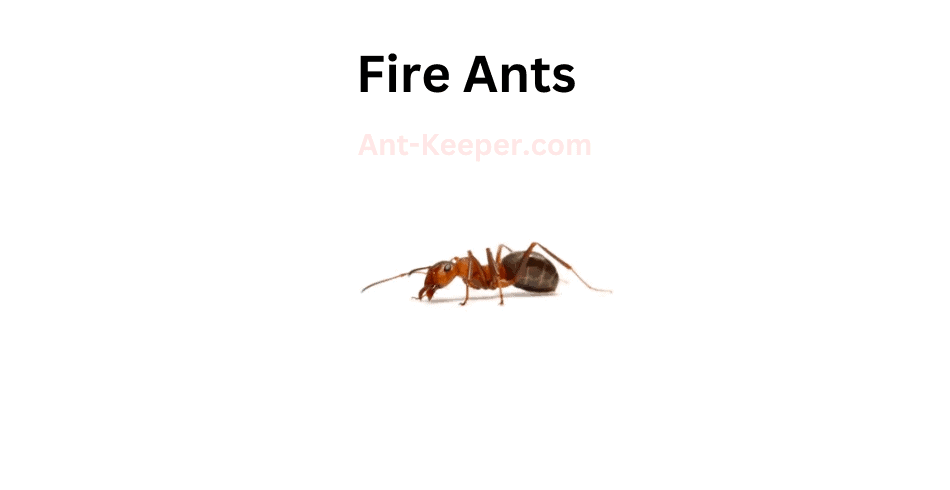
Fire ants are a type of ant that belongs to the Solenopsis genus.
They are known for their reddish-brown color and their aggressive behavior.
Fire ants are social insects that live in colonies, which can range in size from a few hundred to several thousand individuals.
Fire ants are omnivorous and feed on a variety of foods, including insects, seeds, and other small animals.
They are also known to scavenge for food and will often invade other ant colonies to steal their resources.
One of the most distinctive features of fire ants is their ability to sting.
They have a stinger located at the end of their abdomen, which they use to inject venom into their prey or enemies.
Fire ant stings can be painful and can cause an allergic reaction in some people.
Fire ants are also known for their ability to build large mounds, which can reach heights of up to 18 inches.
These mounds are made of soil and are used as a nesting site for the colony.
Fire ants are considered to be an invasive species in many parts of the world, as they can cause damage to crops and wildlife.
They are also a nuisance to humans, as their stings can be painful and their mounds can be unsightly.
Overall, fire ants are fascinating insects that have adapted to thrive in a variety of environments.
While they can be a nuisance, they are an important part of the ecosystem and play a vital role in controlling insect populations.
24) Vampire Ants, Stigmatomma
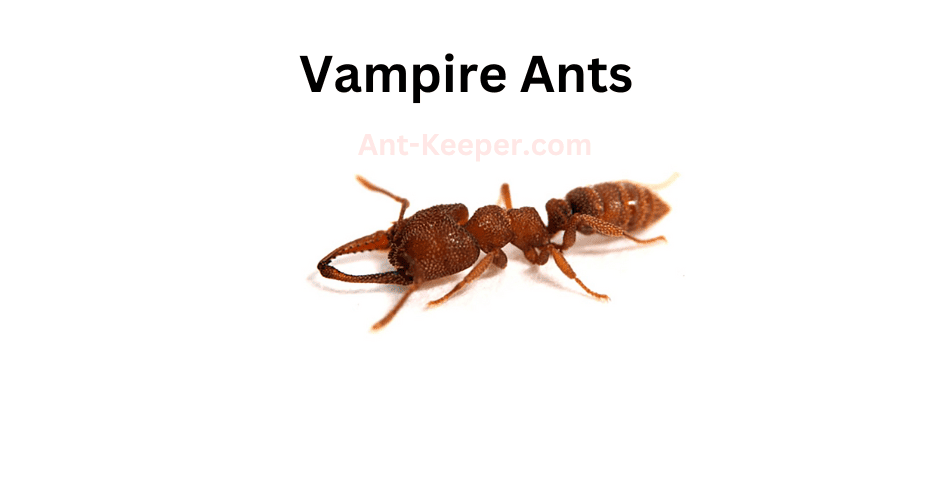
Vampire ants, also known as blood-sucking ants, are a species of ants that feed on the blood of other insects.
These ants are known for their unique feeding behavior, which involves biting into the exoskeleton of their prey and then sucking out their blood.
Vampire ants are typically found in tropical and subtropical regions, where they live in colonies of up to several thousand individuals.
They are known for their aggressive behavior and will attack other insects, including larger prey such as grasshoppers and caterpillars.
One of the most interesting aspects of vampire ants is their ability to adapt to their environment.
In some cases, these ants have been known to feed on the blood of their own colony members when other sources of food are scarce.
Vampire ants are also known for their unique physical characteristics.
They have long, curved mandibles that are used to bite into the exoskeleton of their prey.
They also have specialized mouthparts that allow them to suck out the blood of their victims.
Despite their aggressive behavior and blood-sucking tendencies, vampire ants play an important role in their ecosystem.
They help to control the populations of other insects and contribute to the overall balance of their environment.
Overall, vampire ants are a fascinating species of ants that have adapted to their environment in unique and interesting ways.
Their behavior and physical characteristics make them a subject of interest for scientists and nature enthusiasts alike.
25) Miniature Trap-Jaw Ants, Strumigenys
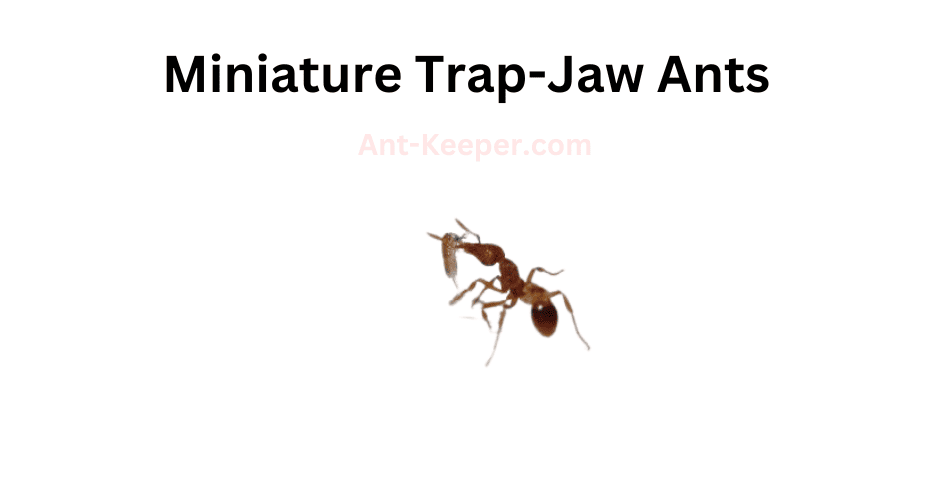
The Miniature Trap-Jaw Ants, scientifically known as Odontomachus sp., are a species of ants that belong to the family Formicidae.
These ants are known for their unique and powerful mandibles, which they use to capture prey and defend their colonies.
The Miniature Trap-Jaw Ants are relatively small in size, measuring only a few millimeters in length.
They have a dark brown or black coloration and a slender body shape.
Their most distinctive feature is their mandibles, which are elongated and can snap shut with incredible force.
These mandibles are used to capture prey, crush seeds, and defend the colony against predators.
The Miniature Trap-Jaw Ants are found in a variety of habitats, including forests, grasslands, and deserts.
They are known to be active during the day and are often seen foraging for food.
These ants are omnivorous and feed on a variety of food sources, including insects, nectar, and seeds.
The Miniature Trap-Jaw Ants are social insects and live in colonies that can range in size from a few dozen to several thousand individuals.
The colony is typically led by a queen, who is responsible for laying eggs and maintaining the colony's population.
The workers are responsible for foraging, caring for the young, and defending the colony.
Overall, the Miniature Trap-Jaw Ants are fascinating insects that have evolved unique adaptations to survive in their environment.
Their powerful mandibles and social behavior make them an important part of many ecosystems.
26) Syllophopsis
Syllophopsisbe is a species of ant that belongs to the family Formicidae.
These ants are known for their small size, measuring only about 2-3 millimeters in length.
They have a dark brown or black coloration and a slender body shape.
Syllophopsisbe ants are typically found in forested areas, where they build their nests in soil or leaf litter.
They are known to be arboreal, meaning they are capable of climbing trees and foraging for food in the canopy.
These ants are omnivorous, feeding on a variety of food sources including insects, nectar, and plant sap.
They are also known to engage in trophallaxis, a behavior where they exchange food and other substances with other members of their colony.
Syllophopsisbe ants are social insects, living in colonies that can range in size from a few dozen to several hundred individuals.
They have a hierarchical social structure, with a queen ant at the top and various worker ants performing different tasks such as foraging, nest building, and caring for the young.
Overall, Syllophopsisbe ants play an important role in forest ecosystems, contributing to nutrient cycling and serving as a food source for other animals.
27) Pale-Footed Ants, Technomyrmex

Pale-Footed Ants, also known as Pheidole pallidula, are a species of ant belonging to the family Formicidae.
These ants are typically small in size, measuring around 2-3mm in length, and are characterized by their pale yellowish-brown coloration and distinctive pale-colored feet.
Pale-Footed Ants are known for their highly organized social structure, which is divided into different castes including workers, soldiers, and reproductive individuals.
Workers are responsible for foraging for food, caring for the young, and maintaining the nest, while soldiers are tasked with defending the colony from predators and other threats.
One of the most interesting aspects of Pale-Footed Ant behavior is their ability to engage in "tandem running," a process in which two ants run together, with the follower using its antennae to track the movements of the leader.
This behavior is thought to help the ants navigate their environment more efficiently and locate food sources more quickly.
Pale-Footed Ants are also known for their unique feeding habits, which include a preference for sweet liquids such as nectar and honeydew.
They are also known to engage in trophallaxis, a process in which food is shared between members of the colony through mouth-to-mouth transfer.
Overall, Pale-Footed Ants are a fascinating species with a complex social structure and unique behaviors.
Their small size and inconspicuous appearance make them easy to overlook, but their importance in maintaining ecological balance and contributing to the overall health of their ecosystem should not be underestimated.
28) Pavement Ants, Tetramorium
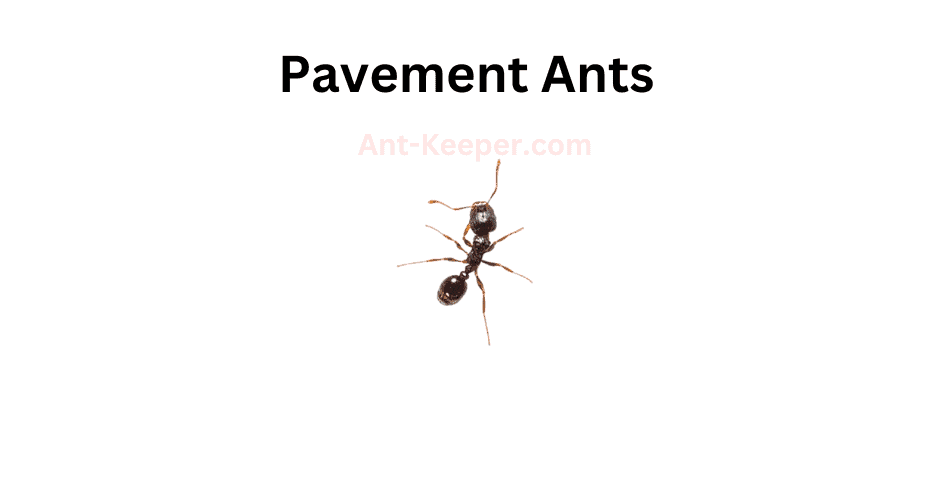
Pavement ants, also known as Tetramorium caespitum, are a species of ant that belong to the family Formicidae.
These ants are commonly found in urban and suburban areas, where they build their nests in cracks and crevices in pavement, sidewalks, and buildings.
Pavement ants are small in size, measuring between 2.5 to 4 mm in length.
They are typically dark brown or black in color, with lighter colored legs and antennae.
These ants are known for their aggressive behavior and will defend their nests fiercely against intruders.
Pavement ants are omnivorous, feeding on a variety of foods including insects, seeds, and sweet substances such as honeydew and nectar.
They are also known to scavenge for food in garbage cans and other waste areas.
Pavement ants are social insects, living in colonies that can range in size from a few hundred to several thousand individuals.
The colony is typically led by a queen ant, who is responsible for laying eggs and maintaining the colony.
Pavement ants are considered a nuisance pest, as they can invade homes and buildings in search of food and shelter.
They are also known to cause damage to pavement and other structures by excavating soil and creating tunnels.
Overall, pavement ants are a common and adaptable species of ant that play an important role in urban ecosystems.
While they may be a nuisance to humans, they are an important food source for many other animals and help to maintain the balance of the ecosystem.
29) Sneaking Ants, Cardiocondyla Minutior

Sneaking Ants, also known as Camponotus obscuripes, are a species of ant that are commonly found in forested areas.
These ants are known for their ability to move quietly and quickly, making them difficult to detect.
Sneaking Ants are typically black or dark brown in color and range in size from 5 to 12 millimeters in length.
They have a distinctive, flattened head and a narrow waist, which helps them to navigate through tight spaces.
One of the most interesting aspects of Sneaking Ants is their behavior.
These ants are known for their ability to sneak up on other insects and steal their food.
They are also known to raid the nests of other ant species, taking their eggs and larvae back to their own colony to raise as their own.
Sneaking Ants are omnivorous, meaning they eat both plant and animal matter.
They have been observed feeding on nectar, honeydew, and small insects.
They are also known to scavenge for food, often taking advantage of the leftovers from other insects.
In terms of reproduction, Sneaking Ants have a unique system.
The colony is typically led by a single queen, who is responsible for laying eggs.
However, there are also a number of worker ants who are capable of laying eggs as well.
These eggs are typically unfertilized and produce male ants, which are used for mating purposes.
Overall, Sneaking Ants are a fascinating species with unique behaviors and adaptations.
Their ability to move quietly and quickly makes them a formidable predator, and their omnivorous diet allows them to thrive in a variety of environments.
30) Argentine Ants, Linepithema Humile
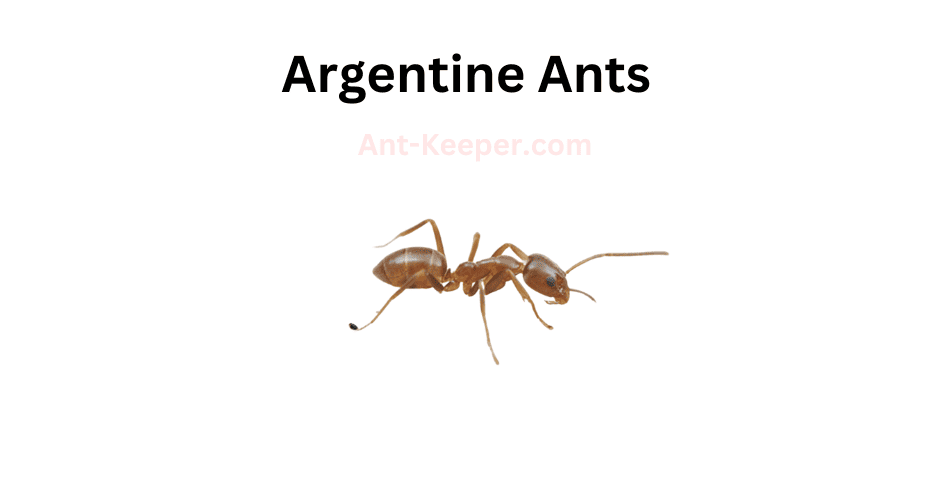
Argentine ants (Linepithema humile) are a species of small, brownish-black ants that are known for their highly invasive behavior.
They are native to South America but have spread to many parts of the world, including North America, Europe, Asia, and Africa.
Argentine ants are social insects that live in large colonies, with thousands of individuals working together to gather food, care for the young, and defend the nest.
They are known for their ability to form supercolonies, which can span vast areas and contain millions of ants.
One of the key factors that has contributed to the success of Argentine ants as an invasive species is their ability to outcompete native ant species for resources.
They are highly aggressive and will attack and kill other ant species, as well as other insects and spiders.
Argentine ants are also known for their ability to form symbiotic relationships with other insects, such as aphids and mealybugs.
These insects produce a sugary substance called honeydew, which the ants feed on in exchange for protection from predators.
Despite their invasive behavior, Argentine ants are not considered to be a significant threat to human health or property.
However, they can be a nuisance when they invade homes and buildings in search of food and water.
Overall, Argentine ants are a fascinating and complex species that have adapted well to a wide range of environments.
Their ability to form large, cooperative colonies and outcompete other ant species has made them a formidable force in the world of insects.
31) Pharaoh Ants, Monomorium Pharaonis
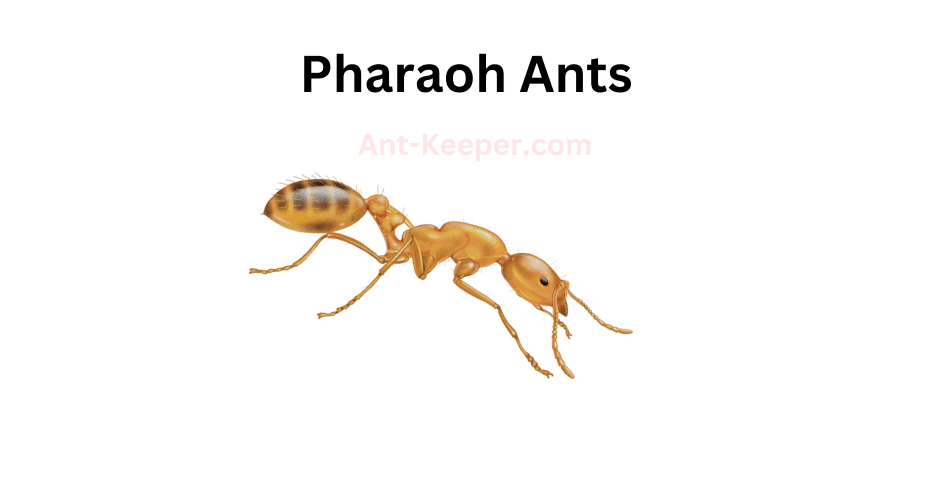
Pharaoh ants, scientifically known as Monomorium pharaonis, are small, yellowish-brown ants that measure about 2 mm in length.
They are commonly found in indoor environments such as homes, hospitals, and commercial buildings.
Pharaoh ants are known for their ability to form large colonies with multiple queens.
These colonies can contain thousands of workers and can quickly infest a building.
They are also known for their ability to adapt to changing environments and can easily relocate their nests if disturbed.
Pharaoh ants are omnivorous and feed on a variety of foods including sweets, meats, and other insects.
They are also known to feed on human fluids such as blood and wound exudates.
Due to their small size and ability to hide in small crevices, pharaoh ants can be difficult to control.
They are known to be resistant to many common insecticides and can quickly rebound after treatment.
Pharaoh ants are also a concern in healthcare settings as they can transmit diseases such as salmonella and staphylococcus.
They can also contaminate sterile equipment and supplies.
Overall, pharaoh ants are a common pest in indoor environments and can be difficult to control.
It is important to seek professional pest control services to effectively manage infestations.
32) Ochetellus Glaber
Ochetellus Glaber, commonly known as the smooth ant, is a species of ant belonging to the family Formicidae.
These ants are small in size, measuring only about 2-3mm in length.
They have a shiny, smooth appearance due to the lack of hairs on their bodies.
The smooth ant is known for its aggressive behavior towards other ant species.
They are often found in large colonies, with a single queen leading the group.
These ants are omnivorous, feeding on a variety of food sources including insects, nectar, and honeydew.
One interesting characteristic of Ochetellus Glaber is their ability to form symbiotic relationships with other insects.
They are known to protect and care for aphids, in exchange for the sweet honeydew that the aphids produce.
The smooth ant is also known for its ability to adapt to different environments.
They can be found in a variety of habitats, including forests, grasslands, and urban areas.
They are able to survive in both hot and cold climates, making them a resilient species.
Overall, Ochetellus Glaber is a fascinating species of ant with unique characteristics and behaviors.
Their ability to form symbiotic relationships and adapt to different environments make them an important part of the ecosystem.
33) Longhorn Crazy Ants, Paratrechina Longicornis
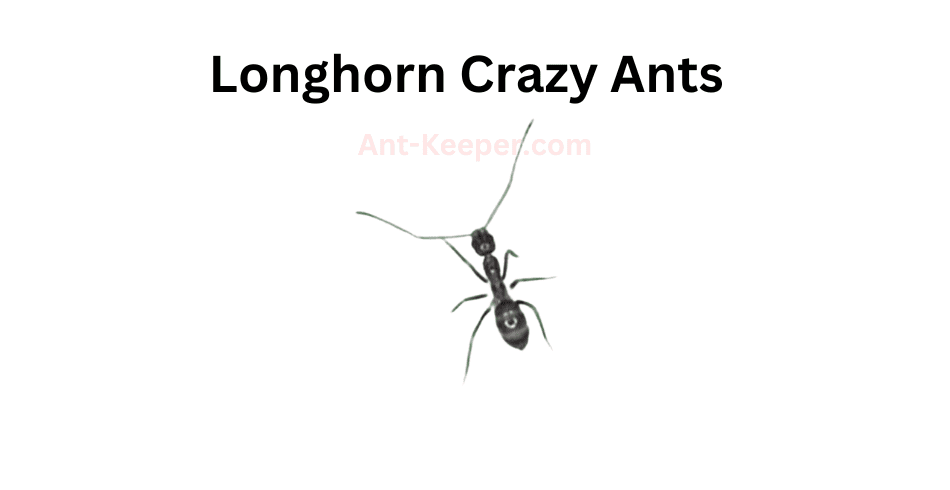
The Longhorn Crazy Ant (Paratrechina longicornis) is a small, dark brown ant species that is known for its erratic and unpredictable behavior.
These ants are typically found in warm, humid environments and are often found in urban areas, where they can be a nuisance to homeowners and businesses.
One of the most distinctive features of the Longhorn Crazy Ant is its long, slender antennae, which can be up to twice the length of its body.
These antennae are used to detect chemical signals from other ants and to navigate through their environment.
Longhorn Crazy Ants are omnivorous and will feed on a wide variety of foods, including insects, fruits, and sweet liquids.
They are also known to be scavengers, and will often invade other ant colonies to steal food and resources.
One of the most interesting aspects of the Longhorn Crazy Ant is its behavior.
These ants are known for their erratic movements and unpredictable behavior, which can make them difficult to control.
They are also known for their ability to form large, sprawling colonies that can quickly take over an area.
Despite their small size, Longhorn Crazy Ants can be a significant pest problem, particularly in urban areas.
They can invade homes and businesses, contaminate food, and cause damage to electrical equipment.
As a result, it is important to take steps to control these ants and prevent infestations from occurring.
34) Big Headed Ants, Pheidole Megacephala

Big Headed Ants, also known as Pheidole megacephala, are a species of ant that belong to the family Formicidae.
These ants are known for their distinctive large heads, which are used for defense and communication within their colonies.
Big Headed Ants are typically found in tropical and subtropical regions, where they build their nests in soil, leaf litter, and other organic matter.
They are omnivorous, feeding on a variety of insects, seeds, and other small organisms.
One of the most interesting aspects of Big Headed Ants is their social behavior.
They live in large colonies, with a queen ant at the center of the hierarchy.
The queen is responsible for laying eggs, while the other ants in the colony perform various tasks such as foraging for food, caring for the young, and defending the colony from predators.
Big Headed Ants are also known for their ability to displace other ant species in their habitats.
They are aggressive and have been known to attack and kill other ants, as well as compete with them for resources.
Despite their aggressive behavior, Big Headed Ants are not considered a major pest species.
However, their ability to displace other ant species and their potential impact on native ecosystems make them an important species to study and monitor.
Check Out Some Of Our Other Ants By Location Posts
| Types Of Ants In Central African Republic | The Central African Republic is a landlocked country located in the heart of Africa. It is bordered by Chad to the north, Sudan to the ... |
| Types Of Ants In Swaziland | Nestled in the southern region of Africa lies the small, landlocked country of Swaziland. Bordered by South Africa to the west and Mozambique to the ... |
| Types Of Ants In Tierra Del Fuego, Argentina | Tierra del Fuego, located in the southernmost region of Argentina, is a land of extremes. The environment is characterized by rugged terrain, icy waters, and ... |
| Types Of Ants In Western Sahara | Western Sahara, a disputed territory located in North Africa, is a vast expanse of desert and rocky terrain. It is bordered by Morocco to the ... |
| Types Of Ants In Martinique | Martinique, a French Caribbean island located in the Lesser Antilles, is a tropical paradise with a diverse range of flora and fauna. The island’s warm ... |
